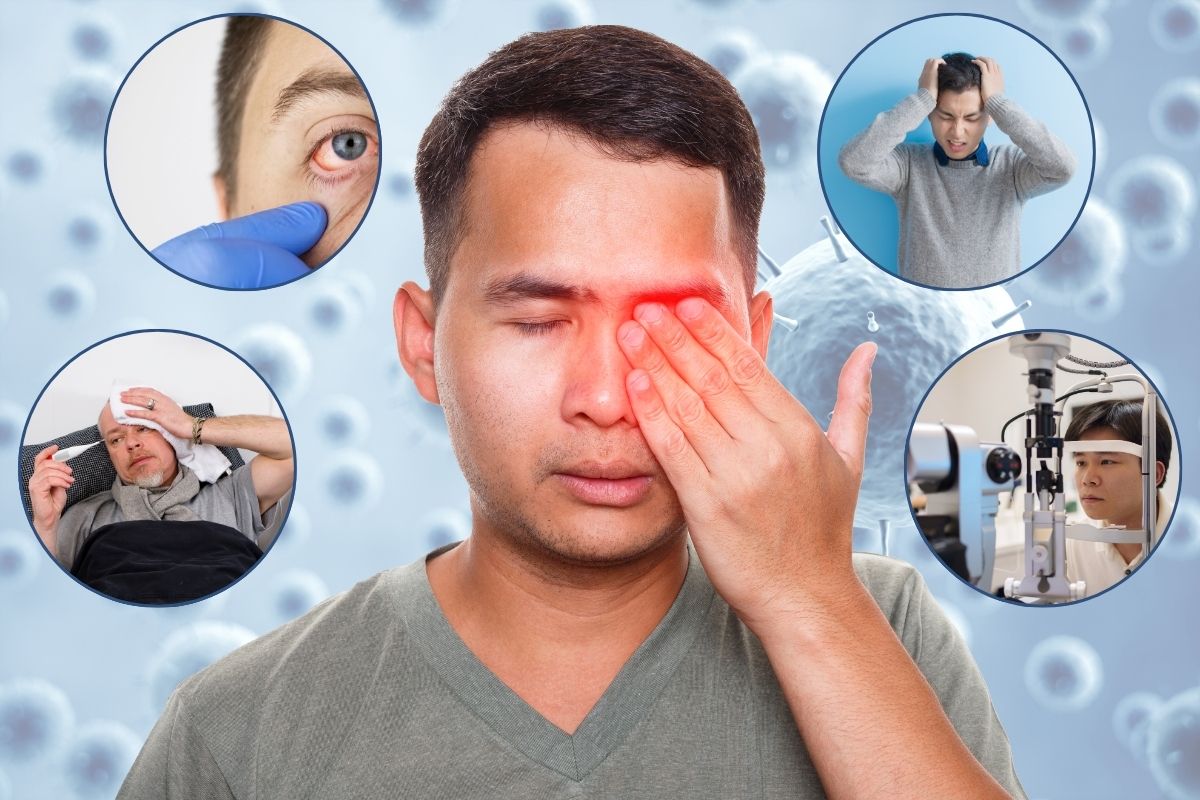


Mucormycosis, commonly known as black fungus, is a serious fungal infection that can prove deadly. It is spawned from a type of mould called mucormycetes. Most patients suffering from this infection are the ones who have weak immune systems, like diabetes patients, cancer patients undergoing chemotherapy, or any other severely immunocompromised patient. Though this infection is not as common, an increasing amount of black fungus infections in India, notably during the COVID-19 pandemic, have raised a lot of eyebrows. Seeking medical help on time can save patients from enduring severe tissue damage, becoming blind, or even dying from it.
Table of Contents
ToggleBlack fungus comes from moulds in the Mucorales group. You can find them in soil, decaying plants, and other organic materials. These spores can enter the human body in a few ways. They may be inhaled, ingested, or enter through broken skin. Mucormycosis is usually not a contagious infection. However, it can seriously harm someone with a weak immune system. The infection has the potential to progress rapidly and spread to different organs such as skin, lungs, sinuses, and even the brain as well as the eyes.
The signs of black fungus infection may differ based on the parts of the body that are affected. Mucormycosis has several specific forms. These include sinus and nasal mucormycosis, pulmonary mucormycosis, cutaneous mucormycosis, and ocular mucormycosis. Some of the main symptoms regarding each infection are listed below:
This is one of the most usual forms of black fungus infection. It generally begins from the paranasal sinuses and can move to the ocular and cerebral regions.
Mucormycosis is a fungal infection found in lung tissues. It often affects people with diabetes, cancer, or other immune system issues.
Cutaneous mucormycosis is usually due to direct contact with a person carrying the infection or some skin malignancy. Therefore, people with ongoing cuts, burns, or deteriorated skin are at higher risk.
Redness and swelling: Some areas may have visible swelling or lesions like inflammation. Skin lesions may become necrotic (dead tissue), often turning black.
Ulcers or blisters: These are fluid-filled skin eruptions or sores that go deep into the skin.
Pain: Ranging from discomfort to substantial aching, the person may suffer from pain as the disease goes deeper.
Fever: Another common sign of mucormycosis infection is fever.
Mucormycosis that affects the eye is also called ocular mucormycosis, and this may lead to loss of vision if not treated.
Pain and redness in the eyes: Painful, red eyes may be a sign of ocular mucormycosis. There may also be swelling in the eyelids.
Vision changes: Blurred vision or partial vision loss is common in ocular mucormycosis.
Protrusion of the eye: In some cases, the eye may bulge out due to the spread of the infection behind the eye.
Discharge: A black, foul-smelling discharge may drain from the eye.
Loss of vision: If the infection reaches the optic nerve, it can result in complete blindness in the affected eye.
If black fungus reaches the brain, it can cause cerebral mucormycosis. This condition is life-threatening.
Confusion and altered mental state: A sudden change in mental status is one of the most dangerous symptoms. This may include confusion, delirium, or loss of consciousness.
Severe headache: A strong and lasting headache often signals brain mucormycosis.
Fever: High fever can occur as the infection spreads to the brain.
Seizures: In advanced cases, the infection may cause seizures.
Neurological deficits: Individuals may experience weakness, loss of coordination, or partial paralysis.
Certain factors increase the likelihood of contracting black fungus. These risk factors include:
Diabetes: High blood sugar can lead to uncontrolled diabetes, which helps fungi thrive.
Weakened immune system: People who have chemotherapy, organ transplants, or HIV/AIDS are more likely to get fungal infections.
Corticosteroid use: Using corticosteroids for a long time can weaken the immune system. This makes the body more open to infections, especially in people with autoimmune diseases.
COVID-19: Patients with COVID-19, especially those needing oxygen or staying in the ICU for a long time, have a higher risk of black fungus infections.
People with recent trauma or surgery are at higher risk for cutaneous mucormycosis. This includes those who have had surgery, burns, or skin injuries.
Mucormycosis, also known as black fungus, mainly impacts people with weak immune systems. However, taking preventive steps can lower the chance of infection. People with conditions like diabetes should watch their health closely.
They need to keep their blood sugar levels in a safe range. Good hygiene is crucial, especially in high-risk areas like your nose and mouth. Wearing masks in places with lots of fungal spores, like damp or rotting organic matter, can reduce your exposure. Treat wounds and infections quickly. Avoiding steroid misuse can lower the risk of this deadly infection.
Treatment for black fungus infection usually includes antifungal medications. Sometimes, surgery may also be needed. The primary treatments include:
Antifungal therapy: Medications like amphotericin B, posaconazole, and isavuconazole treat mucormycosis. These drugs stop the fungus from growing. They can be given through an IV or taken by mouth.
Surgery: In serious cases, doctors might need to remove dead tissue. This helps stop the infection from spreading. This may include removal of infected sinuses, eyes, or parts of the skin.
Manage health issues: Controlling diabetes lowers the risk of fungal infections. This may involve adjusting medications and maintaining proper blood sugar levels.
Black fungus infection can cause serious issues. These include tissue death, blindness, and even death. In order to recognise and treat mucormycosis on time, it is essential to learn about the symptoms. If you or anyone in your vicinity has a black fungus infection, consult a doctor immediately. The sooner you seek recovery for this type of infection, the better the results will be. Antifungal medication and surgery can also help with recovery.

